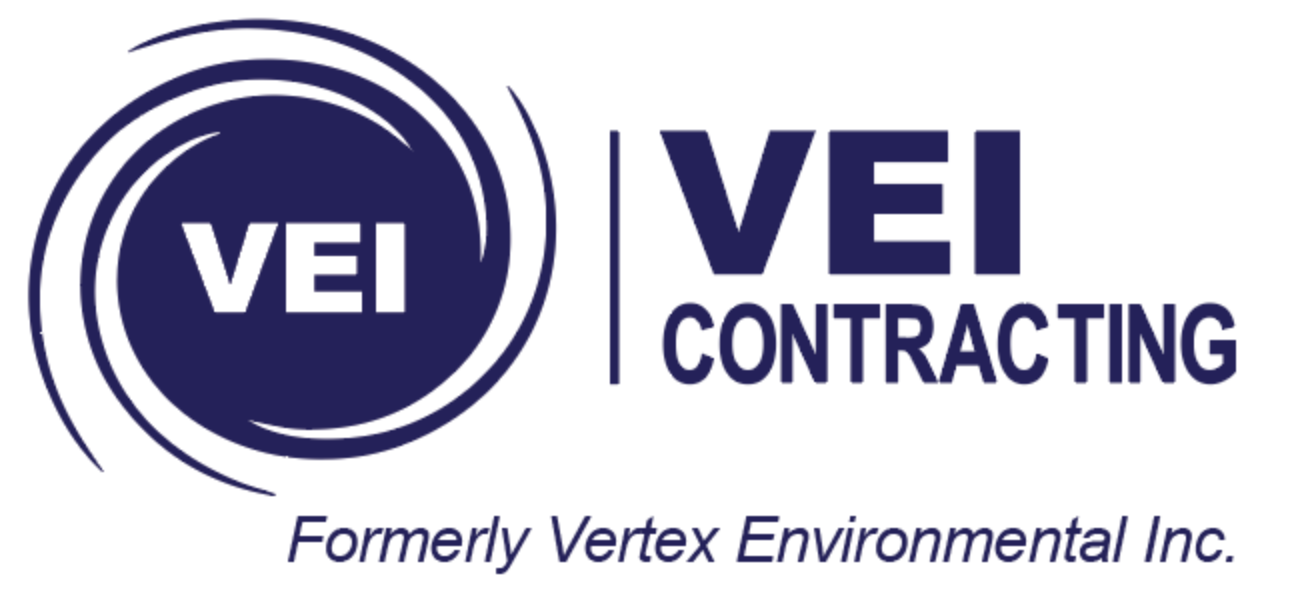2019 RemTech Conference: Thoughts on Environmental Remediation
Around this time last year, our newsletter focused on Insights from the 2018 Remediation Technologies (RemTech) Conference. RemTech, the biggest and arguably best Canadian Environmental Conference, is always a good indicator of what the current and upcoming issues are in the environmental sector.
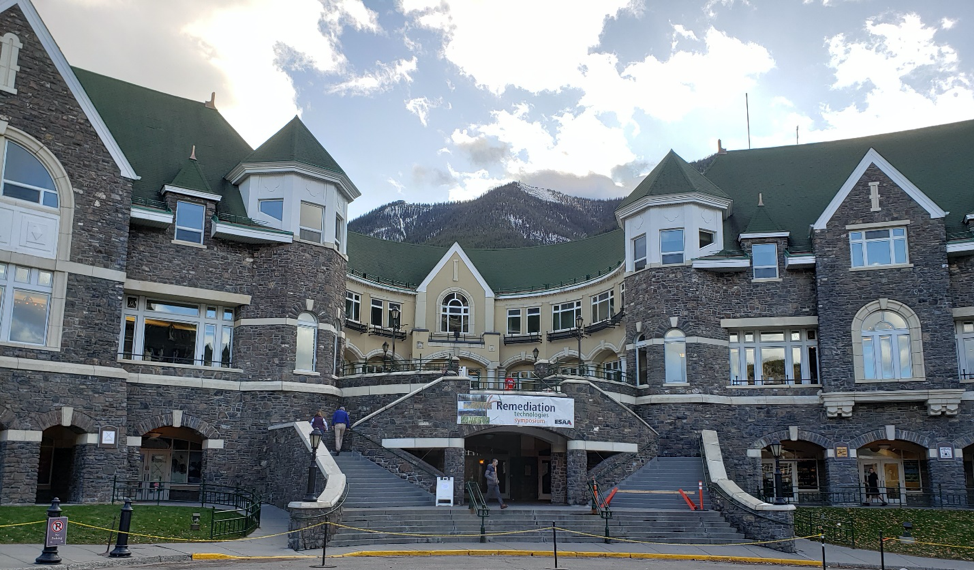
Plus it’s in Banff, Alberta so, of course, the venue at the beautiful Fairmont Banff Springs Hotel is first rate and the views are spectacular!
This year Vertex’s Nathan Lichti and Kevin French attended the Remediation Technologies Symposium 2019 (RemTech™ 2019) conference. Over 3 days, it featured 4 streams of talks per day and 80 talks in total. About 800 people registered!
Some of the key takeaways from this years’ RemTech conference include:
- Legacy Oil and Gas Sites
- Northern and Remote Sites
- Natural Source Zone Depletion
- Big Data and Digital Management
- Waterfront Toronto Portlands Redevelopment
- Activated Carbon-Based Technologies Mature
- Ever More Emerging Environmental Contaminants
- PFAS Compounds (PFOS, PFOA and more)
- Sulfolane
- Bromacil
Legacy Oil and Gas Sites

“There are approximately 165,000 legacy oil and gas well sites in Alberta that require decommissioning, remediation and reclamation.”
The Alberta Energy Regulator (AER) estimates that there are approximately 165,000 legacy oil and gas well sites in Alberta, representing 1.8 million hectares of land, that require decommissioning, remediation and reclamation. The total financial implication of this liability is estimated at almost $60 billion!
Recently the Supreme Court of Canada ruled in the Redwater Energy case that energy companies must clean up these old well sites, stating that bankruptcy is not a licence to ignore environmental regulations. One of the implications of this decision will be a renewed push towards the assessment and remediation of these sites, which is further incentivising an already significant push towards efficiency and effectiveness.
Northern and Remote Sites
Many of these legacy oil and gas well sites are located in northern Alberta and Saskatchewan as well as in the NWT and fall under the general category of northern and remote sites. These sites often bring significant added challenges, including:
- Extreme cold and unpredictable weather
- Short daylight hours
- Limited communication networks
- Access restrictions
- Requirements for on-site emergency support
- Delays for supplies, repairs and crew changeouts
- Wildlife
- Permafrost
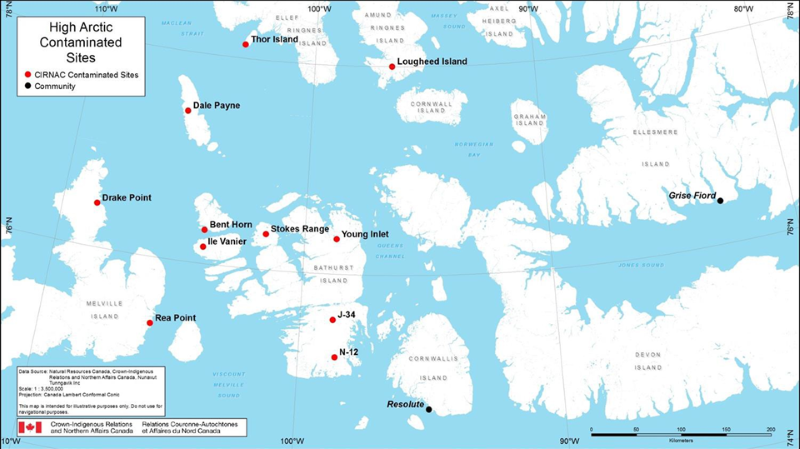
Despite these challenges there are remedial success stories. Selected talks at this year’s conference included:
- The results of very large scale (>5,000,000 L) in-situ chemical oxidation (ISCO) of PHC impacts using hydrogen peroxide at a former maintenance yard on the Alaska highway in northern BC.
- The in-situ remediation of a diesel fuel spill at a site only accessible via winter road located in the NWT to meet fresh water aquatic life standards using excavation followed by chemical oxidation / stimulated aerobic biodegradation.
- The ex-situ remediation of salt impacted soils over one season of treatment via engineered soil leaching and reverse osmosis/water recirculation to address EC, SAR and chloride concentrations.
In some cases, however, there was no alternative to traditional excavation and off-site disposal of contaminated soils – in these cases by containerizing and shipping them “south”.
Natural Source Zone Depletion
Last year at the Battelle Conference on the Remediation of Chlorinated and Recalcitrant Compounds in Palm Springs, California, Bruce Tunnicliffe noted that there were a number of talks on the natural degradation of light non-aqueous phase liquids (LNAPLs) in the subsurface, called Natural Source Zone Depletion (NSZD).
Years ago it was generally assumed that pure petroleum hydrocarbons (PHCs) would be toxic to natural biodegradation and most LNAPL should be aggressively remediated. There is a growing body of evidence that LNAPL bodies will biodegrade over time, primarily via methanogenesis.
There were several talks covering NSZD at RemTech this year. Studies have shown that physical removal of mobile LNAPL from the subsurface (such as via various extraction systems) is effective to a point, but often a significant mass of petroleum hydrocarbons (PHCs) remains as a residual.
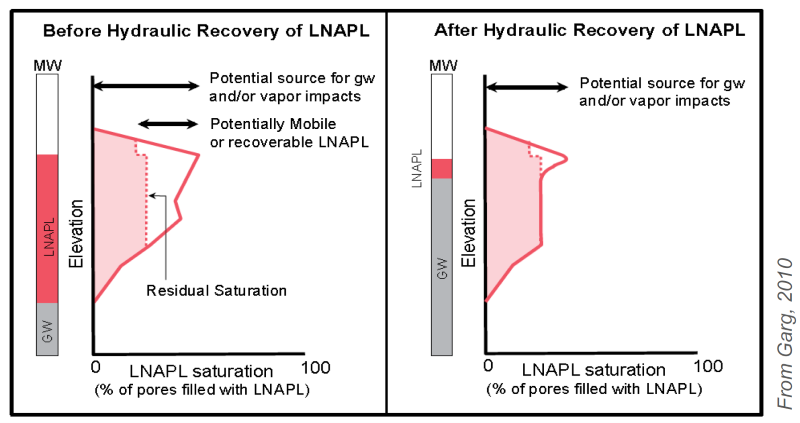
However, studies have also shown that the mass of PHCs in the source zones steadily degrades over time, with some estimates of the source zone depletion half lives ranging from as little as 1 to 2 years. Other studies have shown that LNAPL depletion rates via NSZD can range upwards to tens of thousands of liters per hectare per year – including residual (non-mobile LNAPL)! NSZD can be monitored using metrics such as CO2 generation, O2 consumption, thermal flux (subsurface temperature profiling) and compositional change.
LNAPL source zones over approximately a decade old have been found to be stable or decreasing in size due to NSZD. Therefore, average plume lengths at PHC sites are relatively comparative – regardless of PHC type and volume released.
“Residual LNAPL sources typically do not pose a direct risk to receptors.”
Residual LNAPL sources typically do not pose a direct risk to receptors provided there are institutional controls to prevent exposure. However, early stage LNAPL releases that are mobile still require proper management. This can result in a more effective use of remediation funds at higher risk sites.
Of course, there are as well new methods of managing risk at those mobile sites, such as permeable reactive barriers (PRBs) for PHCs.
Big Data and Digital Management
More and more there is a move towards addressing managing large portfolios of sites by leveraging the power of Big Data. Some of the main conclusions supporting the concept of NSZD were developed by analyzing the results of site assessment, remediation and many years of monitoring data at thousands of similar PHC sites. One of the most powerful aspects of Big Data is the ability to analyze millions of data points and find similarities or patterns that might not be apparent on smaller scales, which can then be used to identify trends and make more informed decisions.
Big Data is not just limited to analyzing historical data. Data acquisition at legacy oil and gas well sites, and other sites, has exploded in recent years. Examples include the collection of data via remote sensing at active sites, real-time field screening for PHCs and other compounds in soil using direct sensing technology, and the collection of detailed 3D topographical data for surface mapping at construction sites to manage soil movement volumes. The increased power of Artificial Intelligence (AI) and machine learning has enabled the fast and efficient analysis of this data at the desktop level.
Big Data is now also being used to support the digital management of sites. Databases of site characteristics, monitoring data, remediation technologies, results, costs, etc. can be compiled, analyzed and used to direct a more effective and efficient use of resources towards site remediation and reclamation. This will undoubtedly lead to the identification and optimization of processes for a wide variety of sites and enable more of these liabilities to be retired while at the same time reducing overall environmental impact and risk. We would call that a win-win!
Activated Carbon-Based Technologies Mature
We previously reported that last year seemed to be the break out year for injectable activated carbon-based amendments, which is activated carbon usually combined with a destruction amendment (e.g. Trap & Treat®). This year there were several more talks showcasing application of this relatively new remediation technology. This included a talk by Nathan Lichti of Vertex and Gerren Feeney of Premier Environmental Services “Case Study: New Delivery Method to Inject Remedial Amendments into a Difficult Aquifer”.
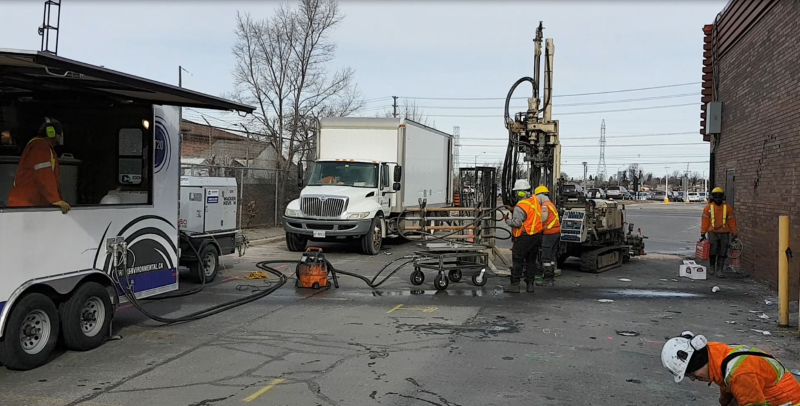
One sign that this segment of the remediation industry is maturing is the realization that these activated carbon-based amendments are not necessarily a “silver bullet” to remediating contaminated sites. In the early days of their use, some of these products were applied anywhere and everywhere to attempt treat just about anything and everything.
However, as more experience is gained it has become apparent that, just like with all other in-situ remedial technologies, success is also contingent on appropriate design and execution. Despite some claims that these injectables can “treat” PFAS compounds (more on PFAS below), in reality they can only sequester them – and only temporarily at that, as activated carbon has a finite adsorption capacity and is subject to saturation and roll-over.
It is also now becoming more widely apparent that activated carbon mass is crucial to remedial success. Kevin French’s talk “Case Study: When In-Situ Techniques Fail” highlighted a site where the application of an activated carbon-based amendment at a site actually made matters worse!
Forensic analysis suggested that it likely all came down to inadequate mass of activated carbon in the ground and an inefficient treatment mechanism since a re-design and re-application of a higher mass of carbon, combined with longer-lasting anaerobic biodegradation, resulted in the remediation goals being achieved.
Waterfront Toronto Port Lands Redevelopment
The Port Lands Flood Protection (PLFP) project and the planned conversion of this under-utilized former industrial land in Toronto into a thriving mixed use community is without a doubt one of the most ambitious brownfield redevelopment projects ever undertaken in Canada and is currently the largest urban redevelopment project in North America.
Given its history as land reclaimed from Lake Ontario using excavation spoils, fire/demolition debris, etc. and the subsequent 100+ years of heavy industrial use, including scrap yards, major bulk petroleum storage and distribution facilities etc., it is not a surprise that there are considerable environmental challenges that need to be overcome.
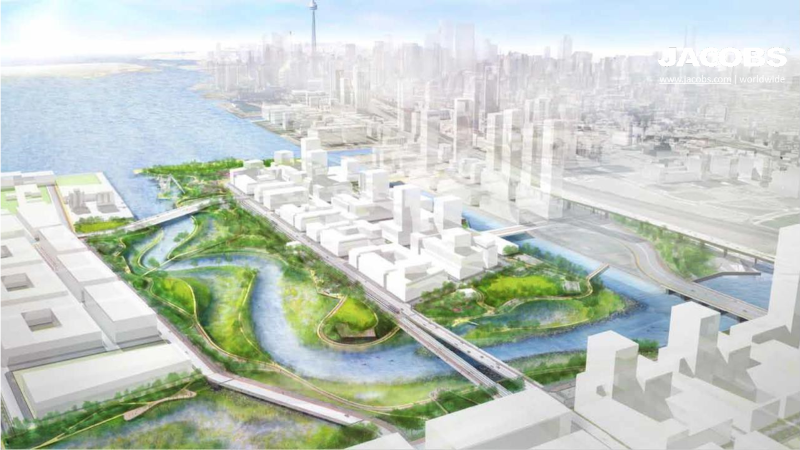
Image Credit: Jacobs
Waterfront Toronto was created to oversee and lead the efforts to plan, design, investigate, remediate, and construct this $1.25 billion vision of a 100 hectare revitalized urban waterfront community. Current activities on the site involve the actual earthworks, one of the major focuses being the creation of a new river channel for the Don River and associated wetlands and parkland. This new river channel passes through some of the most heavily impacted areas of the site, including significant expanses of LNAPL, and has triggered the need for novel construction and remediation / risk management measures.
“A $1.25 billion, 100 hectare revitalized urban waterfront community”
Several talks have been presented at RemTech on this project over the past several years, and this year was no exception. One of the talks this year focused on an alternate analysis that was undertaken to assess the mobility of LNAPL at the site. In order to more accurately assess LNAPL mobility at the site, undisturbed samples of actual LNAPL-impacted soils were collected and used to correlate all types of LNAPL-related data (i.e., visual, analytical and Laser Induced Florescence (LIF)) for the various soil types present at the site. The samples were then subjected to physical LNAPL extraction. The results of this testing revealed that LNAPL saturations below 8,000 mg/kg were residual (non-mobile) and that, depending on soil type, concentrations of up to 36,000 mg/kg may be residual.
Based on the results of this analysis, the estimated savings in soil volumes requiring management was reduced by approx. 50%. Given the strong correlation between LIF response and soil analytical data, it was concluded that even a rudimentary overlay of traditional sampling and LIF screening data can result in significant reductions in contaminated soil volumes.
“Even a rudimentary overlay of traditional sampling and LIF screening data can result in significant reductions in contaminated soil volumes.”
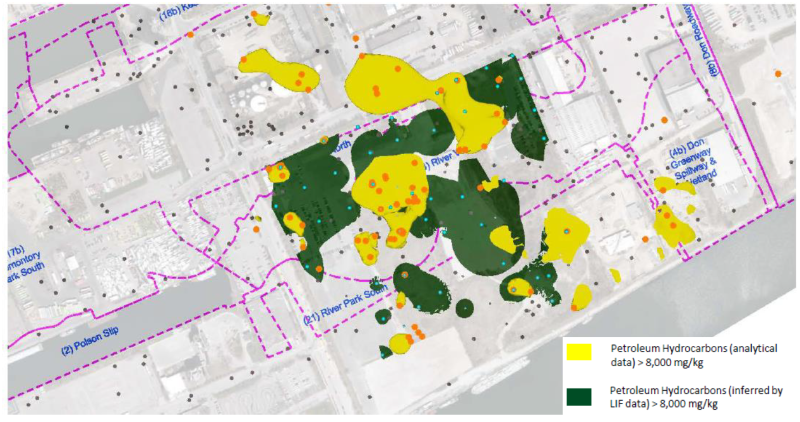
Image Credit: Geosyntec Consultants
Another talk discussed the Risk Management Measures (RMMs) that have been incorporated into the new river channel design to protect against residual LNAPL/sheens and dissolved phase PHC impacts from migrating into the river. These will include a variety of structural and non-structural vertical cut off walls and a multi-layered horizontal treatment barrier designed to be protective of aquatic life. LNAPL delineation activities were essential to support the final design and these took the form of traditional Phase II Environmental Site Assessment activities, as well as High Resolution Site Characterization (HRSC) using Vertex’s LIF probes.
The treatment barrier includes physical (HPDE), hydraulic (bentonite) and chemical (activated carbon) protections, with the concentrations of activated carbon required corresponding to dissolved phase PHC concentrations that will remain in groundwater beneath the finished barrier.
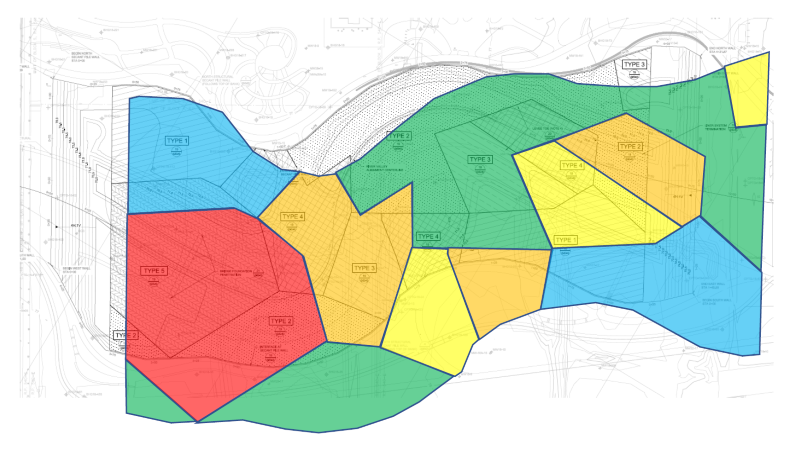
Image Credit: Geosyntec Consultants
Work started recently towards installing caissons for excavation support with dewatering and excavation activities expected to commence in 2020. With a net deficit of soil already at the site for floor protection purposes, plans call for the majority of these excavated soils to be treated ex-situ on-site and reused as beneficial fill. This amounts to over 1,000,000 m3 of soil! Ambitious to say the least. Stay tuned as there will certainly be more updates and talks on this fascinating project for years to come.
Ever More Emerging Environmental Contaminants
Emerging contaminants is always an interesting topic of conversation amongst environmental professionals. As these contaminants enter our collective awareness thoughts turn to remediation. Below is a short list of some of the new-ish contaminants discussed at RemTech this year, together with applicable remedial technologies where applicable.
PFAS Compounds (PFOS, PFOA and more)
Per- and Polyfluoroalkyl Substances (PFAS), such as those found in aqueous film-forming foam (AFFF) and other fire retardants, are still a major area of research and development. Much of the focus of the talks still relates to improving laboratory analytical methods and developing risk-based trigger values since limited in-situ remediation options available at the present time,
Some promising research into in-situ remedial technologies is underway, including treatment trains combining thermal, pH adjustment and chemical oxidation among others, however, there are no real success stories to report as of yet. For now, hydraulic control using pump and treat combined with ex-situ water treatment, and temporary(?) in-situ sorption/sequestration using various forms of activated carbon, resins and polymers remain popular. “Smoldering combustion” also shows promise for some applications.
Likely it will take a regulatory drive in Canada and elsewhere towards actual soil and groundwater standards for specific PFAS compounds to trigger more active research into practical in-situ treatment methods.
Sulfolane
Sulfolane is an industrial solvent that historically saw widespread use as a “sweetening” agent for sour gas; that is it removed hydrogen sulfide, mercaptans and other impurities from natural gas and was used up until about the 1980s. It was also used to remove aromatics (like the BTEX compounds) from aliphatic compounds in PHC mixtures.
At high concentrations it exhibits density-driven characteristics like a dense, non-aqueous phase liquid (DNAPL). It also has low volatility, a fairly high solubility in water and only limited sorption to activated carbon. Like 1,4-dioxane (above), these characteristics can result in large, widespread groundwater plumes. Fortunately, sulfolane can be effectively treated via ISCO, aerobic biodegradation, biosparging and possibly even phytoremediation; so in-situ remediation of this emerging contaminant should be relatively straightforward.
Bromacil
Bromacil was used for non-selective weed and brush control on non-agricultural sites throughout Alberta and other parts of Canada from the 1960s up until the late 1990s. Its persistence in the environment and high water solubility resulted in significant risks to irrigation waters via surface water runoff and groundwater migration. The current Alberta Tier 1 soil guideline for the protection of agricultural irrigation water is below detection level! But what does that even mean in practical terms?
Based on the widespread and significant issue that bromacil and other soil sterilant represent (over 60,000 sites in Alberta alone), InnoTech Alberta, has recently obtained funding from various government and industry sources to establish an Expert Advisory Committee to work towards deriving better site assessment/screening techniques, laboratory analytical methods, Alberta-focused risk-based solutions, and site remediation methods for sterilant-impacted sites. Although still in the early stages, the findings from this 5-year program are expected to establish proven and cost-effective strategies and best-management practices to support regulatory site closure and mange risk on sites impacted with soil sterilants like bromacil.
Although still in the early stages, the findings from this 5-year program are expected to establish proven and cost-effective strategies and best-management practices to support regulatory site closure and mange risk on sites impacted with soil sterilants like bromacil.
Closing Thoughts
After all the conferences we attended and presented at this past year, it is still quite apparent that our industry is an ever challenging and dynamic one. While it’s interesting to see how much we’ve evolved, it is also apparent how much we still have to learn and how much farther we still have to go. But from the perspective at RemTech in Banff it seems like you can see some distance into the future…
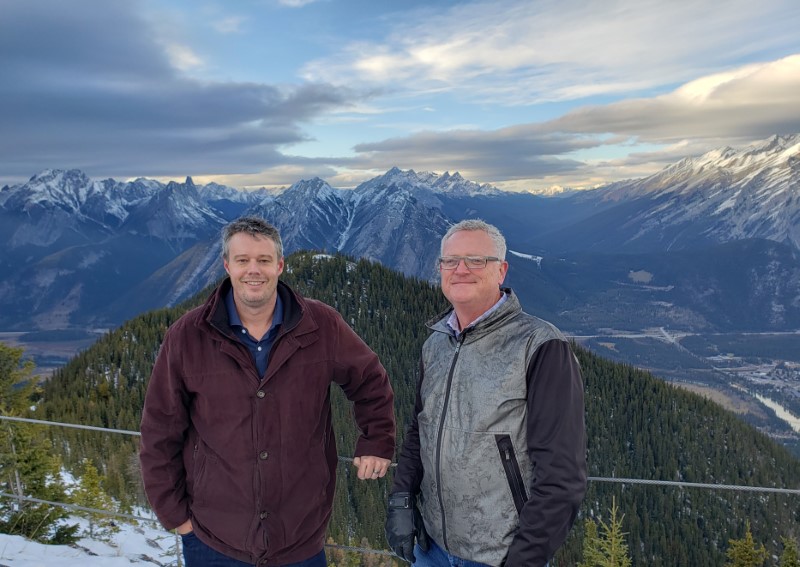
If you’d like to discuss any of these environmental remediation trends or consult us about your upcoming environmental project, please contact Vertex Environmental Inc.
